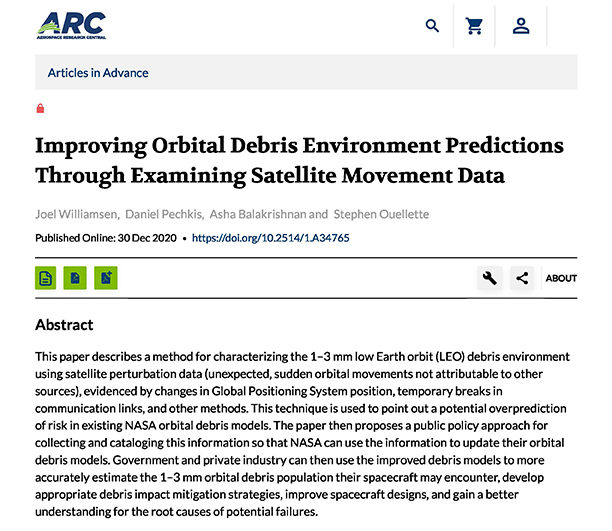Improving Orbital Debris Environment Predictions through Examining Satellite Movement Data
December, 2020
IDA document: D-20448
FFRDC: Systems and Analyses Center
Type: Documents,
Space
Division: Operational Evaluation Division
Authors:
IDA document: D-20448
FFRDC: Systems and Analyses Center
Type: Documents
Division: Operational Evaluation Division
Authors:
Authors
Joel Williamsen, Daniel Pechkis, Asha Balakrishnan, Stephen Ouellette
See more authors

